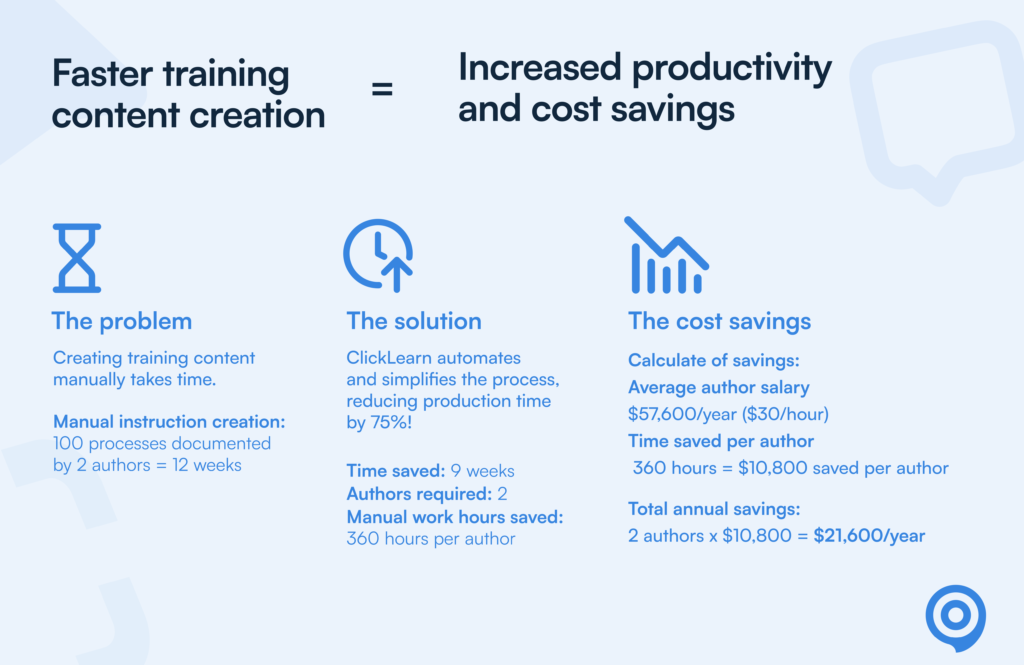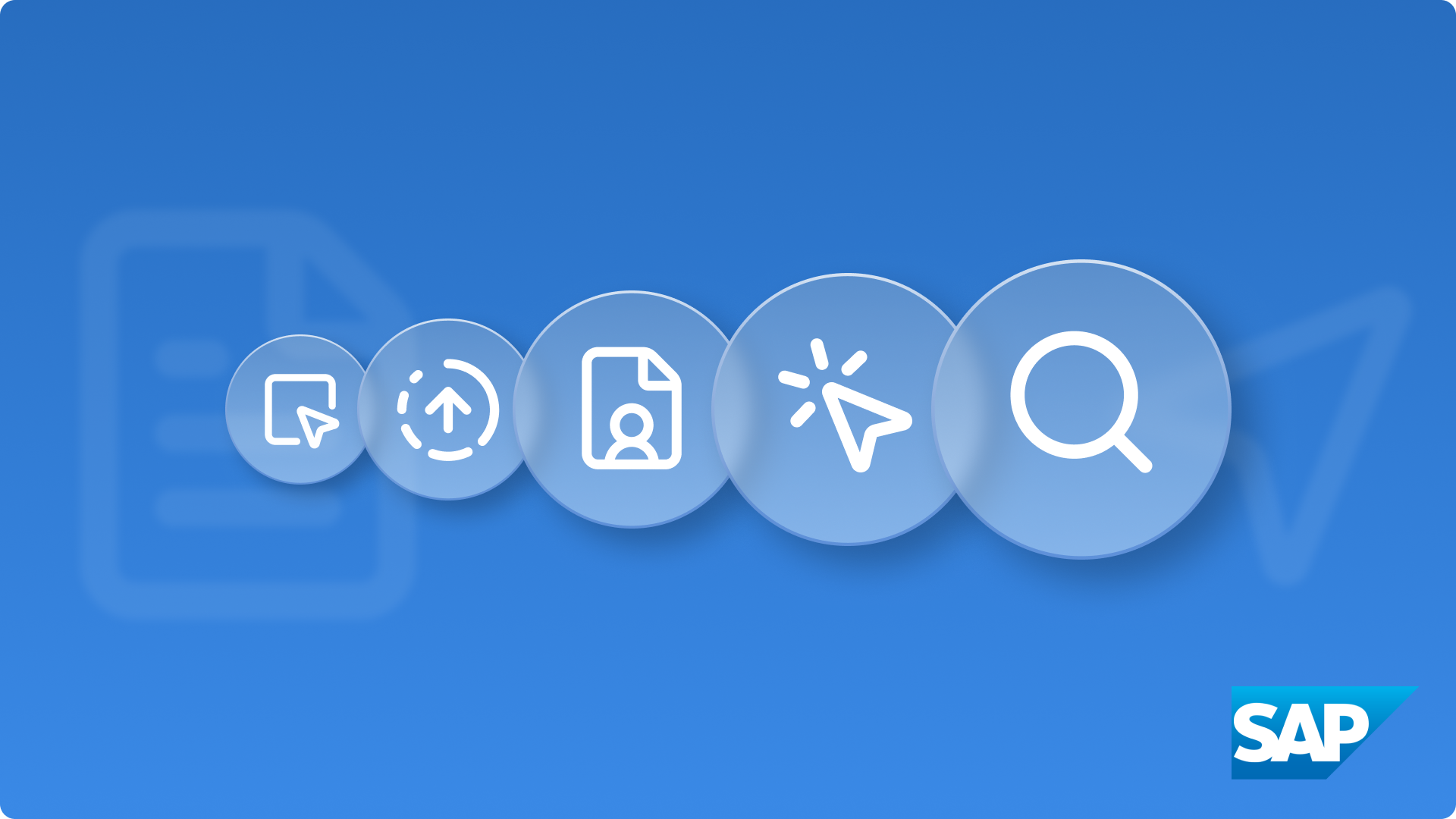The reality of software documentation
If you work in IT or with user training for rollouts, you’ve probably seen what this looks like firsthand:
- Training content scattered across outdated Word documents or endless PowerPoint slides
- Onboarding guides buried in SharePoint and left skimmed or even untouched
- Process updates lost in emails, sticky notes, or to-do lists, making it difficult to track what’s actually changed
Sound familiar?

This isn’t just a “SAP issue.” It’s an enterprise-wide reality. It applies to other platforms like IFS, Oracle, Salesforce etc. IT teams, functional leads, and end-users all struggle because often there’s no single, sustainable way to document and update how things actually get done.
And when you throw in custom-built SAP applications, SAP BTP workflows, and industry-specific processes, finding off-the-shelf training solutions that cover it all is close to impossible.
So, what happens instead?
The hidden cost of documentation struggles
Without a streamlined documentation setup, here’s what many SAP teams experience:
- Overburdened IT teams: Your inbox is full of repetitive “how-to” questions from users who can’t find (or don’t trust) the current instructions.
- Lost productivity: Teams waste time searching for the right process guides—or worse, trying to figure it out on their own.
- Delayed rollouts: New processes, system updates, or custom apps get slowed down because there’s no clear documentation or training materials to support adoption.
- Knowledge gaps: Critical process knowledge is often stuck in the heads of a few key users, making onboarding or cross-training harder than it needs to be.

The bottom line? Software documentation should work for you, not against you. When it doesn’t, it’s not just frustrating – it’s costly.
But here’s the good news: it doesn’t have to stay that way.
Best practices for sustainable SAP documentation
If you’ve been in the trenches dealing with scattered, outdated, or incomplete documentation, you know how difficult it is to keep everything in sync. The good news is that by rethinking how you approach documentation, you can create a system that’s not only sustainable but also helps drive user adoption and reduces the burden on IT.
Here are five best practices that can make a real difference:
1. Centralize your training content
When training materials are scattered across SharePoint folders, Word files, email attachments, or local drives, it becomes almost impossible for users to find what they need. This fragmentation creates confusion, slows down learning, and increases reliance on IT for support.
The solution? Centralize your training content in one easy-to-access platform. A single source of truth makes it simpler for users to locate the latest process guides, tutorials, and onboarding materials.
For example, imagine you’re rolling out a new SAP Fiori app for finance approvals. Instead of emailing PDF guides to every department, upload the materials to a central platform where they’re always accessible, searchable, and easy to update. Now, when a process changes, you can make one update and be confident that every user is working with the latest version.
Centralizing your training content reduces confusion, improves user self-service, and saves IT teams from answering repetitive “how-to” questions.
2. Automate documentation updates
One of the biggest challenges with SAP documentation is keeping it up to date. With system upgrades, custom apps, and evolving workflows, your documentation can quickly fall out of sync with reality. When users lose trust in the accuracy of your training materials, they stop using them altogether—and that’s when your IT team’s workload spikes.
To prevent this, look for ways to automate your documentation updates. For instance, digital adoption platforms like ClickLearn can automatically capture your processes as you perform them in SAP and generate ‘evergreen’ step-by-step guides, updated and completed with screenshots.
So, when your IT team updates a key workflow in SAP S/4HANA, you don’t have to manually rewrite every affected process guide. Instead, the platform does the heavy lifting for you, saving time and ensuring that users always have the most accurate instructions at their fingertips.
3. Tailor training to specific roles
Not all users need the same level of detail in their training materials. A one-size-fits-all approach often leads to information overload, which makes it harder for users to retain what they’ve learned and apply it on the job.
By tailoring your training to the specific roles and tasks users perform, you can create a more personalized and effective learning experience. For example, a procurement specialist in SAP Ariba will have very different training needs from a finance analyst needing to maintain strict budget control and compliance in SAP FM.
Role-specific training helps users focus on the information that’s most relevant to them, making the learning process more efficient and reducing frustration. And when users feel confident in their ability to navigate SAP, they’re less likely to turn to IT for help with basic tasks.
4. Make training interactive and self-driven
Traditional training methods—like lengthy PowerPoint presentations or in-person workshops—can be effective in the short term, but they’re often difficult to revisit later. If users can’t easily refresh their knowledge, they’re more likely to forget what they’ve learned and fall back on old habits.
To address this, consider creating interactive, self-driven training materials that users can access anytime, anywhere. Digital walkthroughs, video tutorials, and interactive simulations can all help users learn by doing, rather than just passively consuming information.
For example, instead of providing a 20-page PDF guide, create an interactive walkthrough that shows users how to complete a task in SAP step by step. Tools like ClickLearn make it easy to generate multiple formats (video, PDF, simulations) from a single recording, giving users the flexibility to learn in the way that works best for them.
Interactive, on-demand training empowers users to learn at their own pace and reduces their reliance on IT support.

5. Track and measure training effectiveness
The only way to know whether your training materials are actually helping users is to measure their impact. Without data, it’s impossible to identify what’s working, what’s not, and where you might need to make improvements.
In general, tracking and measuring is a critical component of change management and should also be carried forward into change enablement.
Analytics tools can help you track how users engage with your training content and identify areas where they might be struggling. For instance, ClickLearn’s built-in analytics can show you which process guides users are accessing most often, how long they’re spending on each step, and where they’re dropping off.
This data can help you fine-tune your training materials, prioritize updates, and ensure that your documentation continues to meet users’ needs over time.
Conclusion: Smarter documentation that drives user adoption
Effective SAP documentation isn’t just about creating process guides—it’s about empowering users to learn, adopt, and seamlessly apply those processes in their daily tasks, with minimal friction so that they can perform their daily tasks efficiently. When users can easily find up-to-date, role-specific instructions exactly when they need them, you reduce their dependency on IT support, increase productivity, and improve overall user satisfaction.
By centralizing your content, automating updates, tailoring training to real-world roles, making the experience interactive, and tracking your results, your SAP documentation can shift from being a burden to becoming a strategic asset. You get to streamline training—and that enables your teams to focus less on hunting for answers and more on getting the job done and driving innovation – and, finally, helping the business achieve long-term success.
With the right documentation strategy, you’ll not only improve SAP adoption—you’ll build a scalable, sustainable system also that supports users’ performance, reduces friction, and fuels ongoing growth.

